September 2023
Fig.1
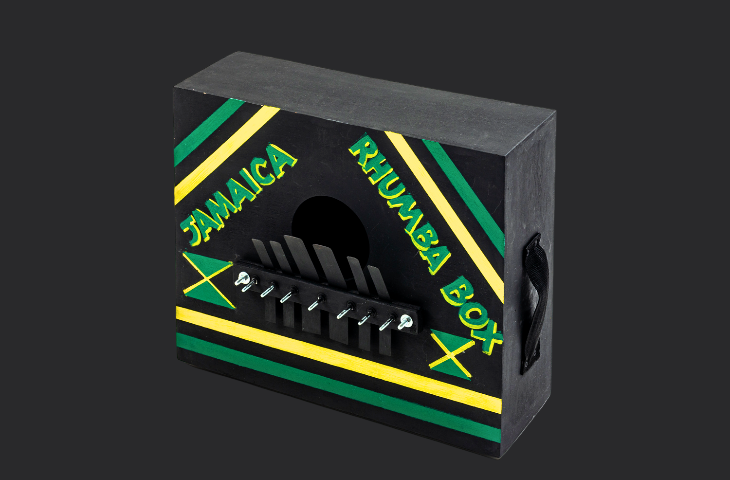
Rhumba box, Philip Supersad, Kingston (Jamaica), 2021, inv. 2022.0170
Fig.2
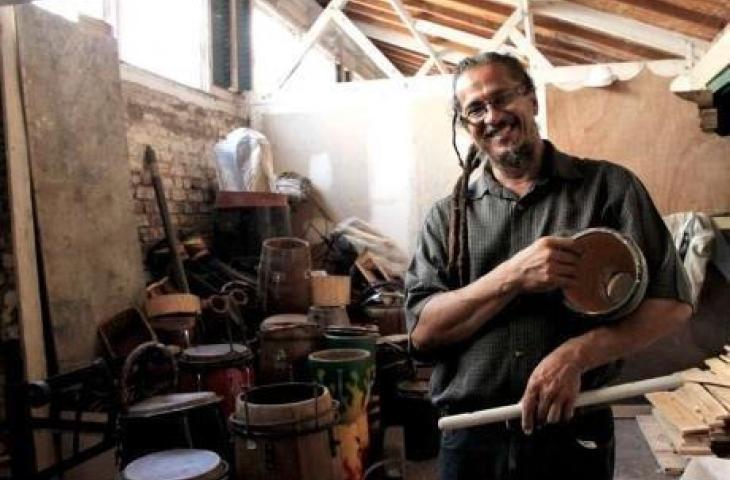
Philip Supersad in his studio, downtown Kingston, 2012 © The Jamaica Gleaner
Fig.3
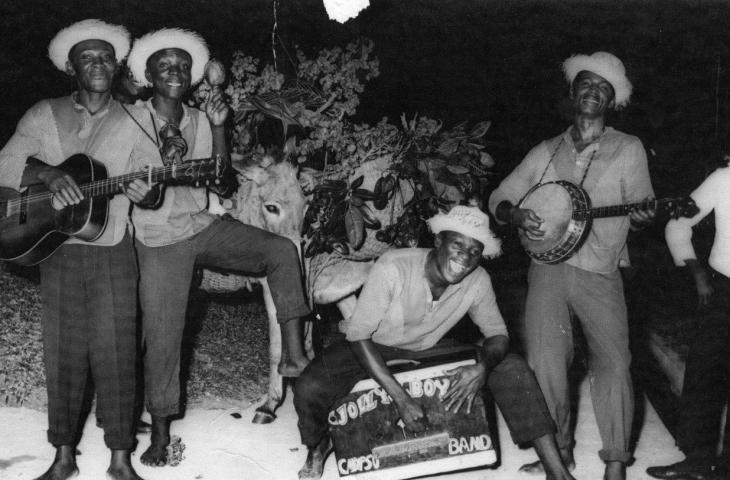
The Jolly Boys in 1958 at Round Hill Hotel, Jamaica
Fig.4
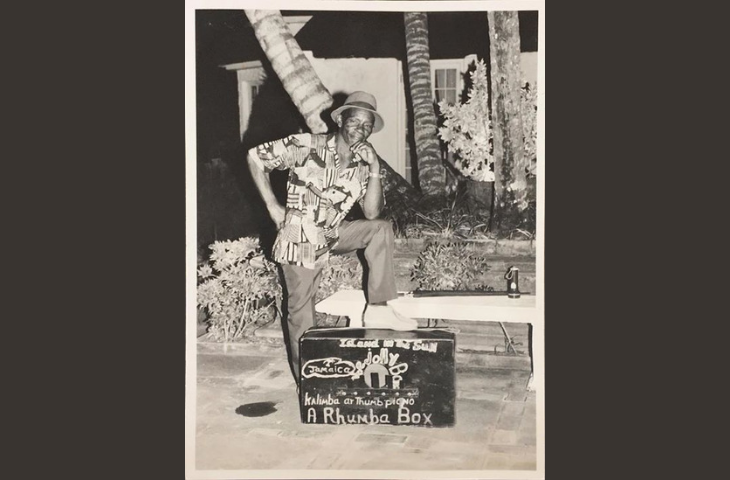
Derrick ‘Johnny’ Henry of the Jolly Boys
Fig5
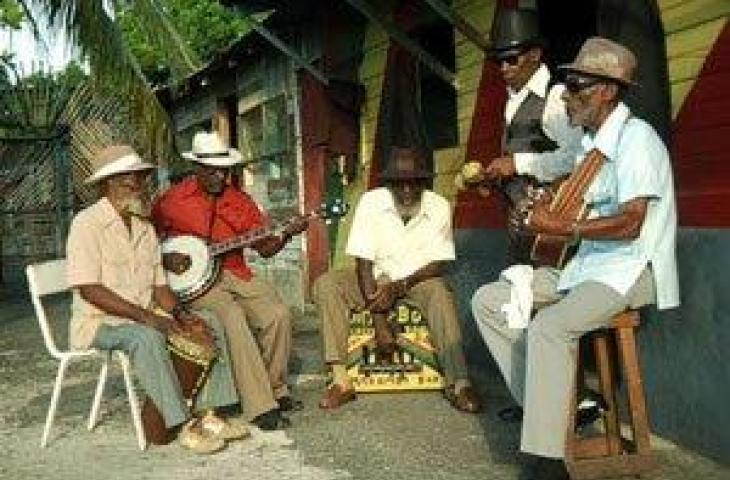
The Jolly Boys, around 2010 © www.reggaeville.com
The rhumba box at the MIM: a migrating Instrument
In October 2022, the Embassy of Jamaica donated a rhumba box to the MIM. It is the first Jamaican instrument, and also the first rhumba box, to enter the MIM's collection.
The rhumba box is a lamellophone – commonly called a ‘sanza’ – with a large wooden box serving as a resonator. The musician, sitting on the box, plucks the large bamboo or metal keys with the fingers of their right hand, while rhythmically tapping on the box with the left hand. The keys vary in number and arrangement; they are laid out in such a way that local melodies can be played with ease.
The rhumba box is a migrant. The African lamellophone crossed the Atlantic Ocean in the 17th century when enslaved Africans were deported to the ‘New World’. Black African communities have long used musical instruments made of a series of lamellae or keys attached to a resonating body. These lamellophones, which originated in the savannah of Cameroon and the area around the lower Zambezi River, spread widely and can now be found in nearly every sub-Saharan African community, taking on a wide variety of shapes and sizes.
The Jamaican rhumba box likely developed from the models used in the Cameroon Grasslands and Eastern Nigeria, where large lamellophones with bamboo keys were played. The buzzing devices – vibrating and rattling elements made from metal, shell, wood, or stone and attached to the sound box or board – which are so typical of sub-Saharan lamellophones, are absent in the Caribbean version.
Mento: Jamaica’s acoustic soul
While African sanzas serve to relax, dance, call for rain, or communicate with ancestors, the Jamaican rhumba box is mainly used to play Mento – a traditional Jamaican musical style that predates reggae and ska. Mento was born from a primarily rural, agricultural society and became part of the planting and harvesting culture of emancipated Jamaicans. It blended the long tradition of work songs from Jamaican slave plantations with church hymns from the post–Civil War United States and English folk songs – the British had captured Jamaica from the Spanish in 1655.
Mento music is relatively slow and in quadruple time, with a strong accent on the last beat of the bar. The tunes are usually in major keys, with regular, well-balanced phrases that lend themselves to harmonization with primary chords.
Mento’s instrumentation was mainly homemade, consisting of shakers, gourds, graters, flutes, hand drums, fiddles, banjos, and the characteristic rhumba box. Even today, Mento is recognizable by its distinctive acoustic sound.
Mento became a hallmark of Caribbean music in the 1920s. Typical Mento lyrics have “a humorous slant, [and] a focus on everyday issues such as poverty and politics, a light-hearted feel and often, sexual innuendo![1]” Many biting Mento lyrics were initially viewed as inappropriate and censored for political and social reasons. Nevertheless, the genre thrived underground for many years. The 1940s and 50s were its golden age, when Mento became the heartbeat of the nation, with stars such as Louise Bennett, Count Lasher, Lord Flea, and Harry Belafonte. The genre, rich in double entendres, flourished until Jamaican independence in 1962, after which it was gradually overshadowed by reggae and rocksteady.
Mento also played a key role in Jamaican music history, as it was the first genre to be recorded – initially on wax rolls, with lyrics sold as sheet music, and later on vinyl and cassette. Today, the Mento legacy is kept alive by groups like the Jolly Boys, who revived the genre in the 1970s.
Other genres that emerged from the fusion of African and European musical influences include Calypso in Trinidad and Tobago, and Mambo in Cuba.
A transatlantic return
In the 19th century, the Afro-Caribbean model of the rhumba box returned to West Africa through the ‘dropping’ of freed African-American slaves in Freetown (Sierra Leone), Liberia, and Libreville. In Nigeria, the Agidigbo emerged as a result of the reintroduction of African musical elements following the return of Afro-Americans after the abolition of slavery in 1888.
Text: Saskia Willaert
Bibliography
- Rohan Budhai. ‘Mento vs Calypso’. Jamaica Observer 12 January 2023
- Gerhard Kubik. Kalimba, Nsansi, Mbira - Lamellophone In Afrika. Museum für Völkerkunde, 1998
- Catherine Ross. ‘Mento has been described as ‘Jamaica’s original foundation music, the father of them all’. Museumand, The national Caribbean Heritage Museum. November 2020
- ‘Mento: Reggae’s Forgotten Past.’ Clash Magazine 52.21 July 2010
- ‘The oldest Swingers: The Jolly Boys’. The Guardian 25 July 2010